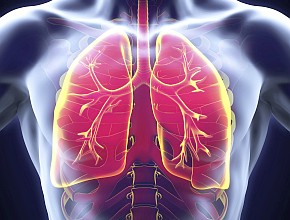Below are the 3 articles selected as suggested reading for this week by McMaster editors.
Herpes zoster subunit vaccine in adults ≥70 years
In this study, the herpes zoster subunit vaccine (HZ/su; recombinant varicella-zoster virus glycoprotein E and an adjuvant system) had about 90% efficacy in preventing herpes zoster and postherpetic neuralgia among patients ≥70 years of age.
Vaccination with a live attenuated herpes zoster vaccine is available. Current manuscripts describe the use of the investigational vaccine (HZ/su) among those ≥70 years of age. Among over 16,000 participants, the use of the vaccine (2 injections 2 months apart) decreased the incidence of herpes zoster from about 9/1000 person-years to 0.8/1000 person-years. The mean period of observation was 3.7 years. The incidence of postherpetic neuralgia decreased from 1.2 to 0.1 per 1000 person-years.
Local reactions (pain, redness, swelling) were more common among recipients of the vaccine (74.1% vs 9.9%). Systemic reactions (fatigue, myalgia, headache, shivering) were also more common (53% vs 25.1%). Serious adverse effects occurred with similar frequency.
Oxygen in the ICU: how much is too much?
Ferguson ND. Oxygen in the ICU: Too Much of a Good Thing? JAMA. 2016 Oct 18;316(15):1553-1554. doi: 10.1001/jama.2016.13800. PubMed PMID: 27706469.
Maintaining a high level of oxygen (allowing partial pressure of arterial oxygen [PaO2] values up to 150 mm Hg or arterial oxyhemoglobin saturation [SpO2] values between 97% and 100%) in comparison to lower oxygen values (PaO2 between 70 and 100 mm Hg or SpO2 between 94% and 98%) was associated with lower survival in the intensive care unit (ICU).
All patients admitted to the ICU with an expected length of stay ≥72 hours were randomized to what the authors considered standard oxygen therapy (higher target level of oxygen) versus conservative oxygen therapy. Daily PaO2 averages during the ICU stay were 102 mm Hg (interquartile range [IQR], 88-116) versus 87 mm Hg (IQR, 79-97). Mortality was lower in the conservative oxygen therapy group (11.6% vs 20.2%; absolute reduction of risk of 8.6% [95% confidence interval, 1.7%-15%]). The conservative group had fewer episodes of shock, liver failure, and bacteremia.
Both authors of the paper as well as the accompanying editorial stressed some methodological limitations (intervention not blinded, single center, trial stopped early with a small number of events). At the same, they commented on no clear downsides (and possibly benefit) of maintaining a relatively normal rather than an elevated level of oxygenation.
AABB CPGs: RBC transfusion thresholds and storage
This summary was expanded in Publications of the Week from January 16, 2017: http://empendium.com/mcmtextbook/week_publications/157073,publications-of-the-week-january16.
The clinical pattern of blood transfusions continues to change. This document, prepared on behalf of the AABB (formerly known as the American Association of Blood Banks), continues the trend of limiting the situations in which red blood cell (RBC) transfusion is recommended.
In the systematic review of evidence evaluating hemoglobin thresholds for RBC transfusion (7-8 g/dL vs 9-10 g/dL) the authors analyzed over 12,000 participants of 31 randomized clinical trials (RCTs) and found that restrictive RBC transfusion thresholds were not associated with higher rates of adverse clinical outcomes, including short-term mortality, myocardial infarction, or cerebrovascular accidents. In another analysis, examining the duration of RBC storage, 13 RCTs included 5,515 patients randomized to receive fresh(er) blood (<10 days of storage time) or standard-issue blood. This analysis demonstrated that fresher blood was not associated with improved clinical outcomes.
Accordingly, the authors recommend a restrictive RBC transfusion threshold in which the transfusion is not indicated until the hemoglobin level is 7 g/dL for hospitalized adult patients who are hemodynamically stable, including critically ill patients, rather than when the hemoglobin level is 10 g/dL. They also recommend a restrictive RBC transfusion threshold of 8 g/dL for patients undergoing orthopedic surgery, cardiac surgery, and those with preexisting cardiovascular disease. In general, the authors consider the threshold of 7 g/dL as likely comparable with 8 g/dL. These recommendations do not apply to patients with acute coronary syndrome or patients with severe thrombocytopenia who are at high risk of bleeding.
The authors also recommend transfusion of RBCs stored in a standard fashion rather than transfusion of only fresh units of blood (storage time <10 days).
 English
English
 Español
Español
 українська
українська





